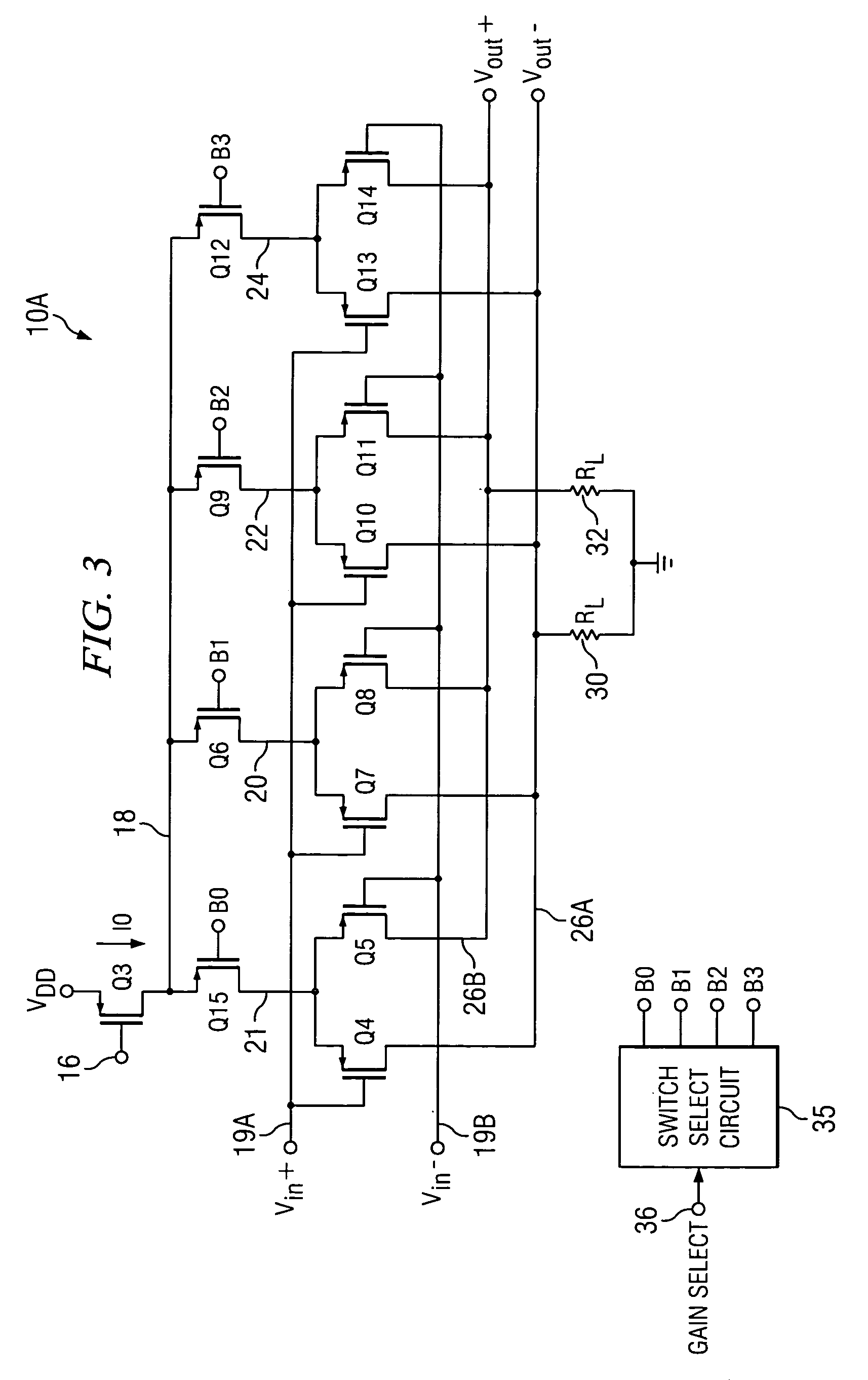Programmable low noise amplifier and method
a low-noise amplifier and programmable technology, applied in amplifier combinations, amplifier control details, gain control, etc., can solve the problems of high noise, circuit oscillation, and “overload” of strong input signals, and achieve accurate tail current tracking (i)
- Summary
- Abstract
- Description
- Claims
- Application Information
AI Technical Summary
Benefits of technology
Problems solved by technology
Method used
Image
Examples
Embodiment Construction
[0029]Referring to FIG. 2, low noise programmable differential amplifier 10 includes a bias circuit including an operational amplifier 12 having its (+) input coupled to a reference voltage Vref, its output connected to the gate of a N-channel transistor Q1, and its (−) input connected to the source of transistor Q1. A resistor 14 having a resistance RB is connected between ground and the source of transistor Q1. The drain of transistor Q1 is connected by conductor 16 to the drain of a P-channel current mirror control transistor Q2 and to the gates of transistor Q2 and a P-channel current mirror output transistor Q3, referred to herein as tail current transistor Q3. A tail current I0 flows through tail current transistor Q3 by virtue of the operation of the above mentioned bias circuit and transistor Q2 to achieve tracking of tail current I0 width respect to temperature and processing parameters associated with control resistor 14 and subsequently mentioned load resistors 30 and 32....
PUM
 Login to View More
Login to View More Abstract
Description
Claims
Application Information
 Login to View More
Login to View More - R&D
- Intellectual Property
- Life Sciences
- Materials
- Tech Scout
- Unparalleled Data Quality
- Higher Quality Content
- 60% Fewer Hallucinations
Browse by: Latest US Patents, China's latest patents, Technical Efficacy Thesaurus, Application Domain, Technology Topic, Popular Technical Reports.
© 2025 PatSnap. All rights reserved.Legal|Privacy policy|Modern Slavery Act Transparency Statement|Sitemap|About US| Contact US: help@patsnap.com



